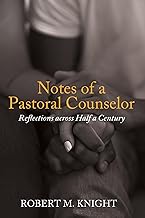That’s what I remember Memorial Day being called when I was a youngster–Decoration Day–at least in my family.
My dad would take me with him to where his parents were buried in the Pleasant Hill Baptist Church Cemetery, outside Thompsonville, in southern Illinois. He would take garden tools to clean the graves. I don’t know how much help I was, at such a young age, but the ritual has provided warm memories of me being with my dad–my always being included in whatever was important to him, particularly involving church and sports–all these many years later. My father would decorate his parents’ graves with Spring flowers from our yard which he had lovingly planted and cultivated.
A couple of years ago, when visiting my hometown, fifteen-or-so miles away, I made a trip out to that cemetery to re-visit it–more than half-a-century later. Unlike most things that seemed bigger in childhood, but are in fact smaller in the reality of later years, the cemetery had been expanded and was now larger than I remembered. And it appeared to have been well cared for.
My paternal grandparents were born before the Civil War and, of course, had died before I was born in the middle of World War II. What struck me on that last visit–which I hadn’t remembered from my childhood–were the number of small flat gravestones alongside my grandfather’s grave marking so many infant deaths too characteristic of more than a century ago.
Both of my paternal grandparents had been widowed and were buried alongside their late spouses. Of their marriage, one son, my dad, was born in 1903. Even with all those infant deaths, he still had lots of older half-brothers and sisters, older enough in fact to have been his parent.
My particular interest in families–across the generations–comes, I suspect, from my having for so many years taught Family Systems Theory, including Murray Bowen’s genogram, to graduate students preparing to become Marriage and Family Therapists.
By the time I was in the fifth grade I had started learning to play the coronet (later trumpet) in my public school’s music program. And before long I was recruited to be the “assistant” bugler for the local American Legion Post which provided a military burial for all veterans in our small town.
As the “assistant,” I–hidden in the woods some distance away–played the “echo” after the “first team” bugler, a high school kid, sounded taps at the graveside following the Legionnaire’s “firing squad” volley.
In Illinois in those days there were some pretty cold winters, and at least once in my bugling career, as I recall with some embarrassment, there was no echoing of the taps on my part, given that both my lips and my trumpet were too frozen to make a sound.
By the time I was in high school, I had been promoted to the “first team” bugler. And the pay was $2 per funeral, which was pretty good spending money, considering that, in the late 50’s-early 60’s, I could go to the movies for twenty cents.
I suspect my “bugling fee” had been tacked on to the funeral director’s bill and charged to the grieving family, along with enough money for the Legionnaires to also later “have a drink” (or more) at one of the many local “watering holes” in our town.
As for that military funeral ritual, the highlight of the year involved multiple performances at the various cemeteries in the “district,” in and around our town. This was held on Decoration–later, after World War II, more commonly called Memorial Day–a solemn occasion first established in 1868 by General John A. Logan, which was declared a national holiday in 1967. Interestingly enough, Logan was also from southern Illinois, a nearby town called Murphysboro..
That was also Opening Day for the summer baseball season in southern Illinois. And by the time I was in high school, I was playing American Legion baseball for that same Patrick McClellan Post 177.
What a life for a sports and music loving teenaged boy–playing trumpet in the morning–and baseball in the afternoon!
There were at least half-a-dozen cemeteries in the “district,” and large crowds would gather at each for the memorializing of veterans who had died. The ritual was the same: a small flag had been placed on each grave, the chaplain would offer a prayer, the command was given–three times–the firing squad’s volley thundering across the sky, those bolt action rifles ejecting shell casings on the ground which little kids would scramble to retrieve, and I would “sound” taps.
Time and travel to those various cemeteries had also been carefully choreographed to allow for the Legionnaires to “stop for a drink” at assorted taverns along the way. On a typically warm-beginning of summer-day, I would sit outside and one of the Legionnaires would bring me a soft drink.
As you can imagine, however, after several “belts” throughout the morning, by the time our entourage would arrive at the last cemetery, at high noon–which was actually a memorial garden in the center of town, including a stone on which were engraved the names of our community’s war dead–the coordination of those American Legion rifle bearers had become substantially impaired.
Such that their last three volleys typically sounded less like the precision of a crack military firing squad and more like some guys out in a corn field shooting quail!


